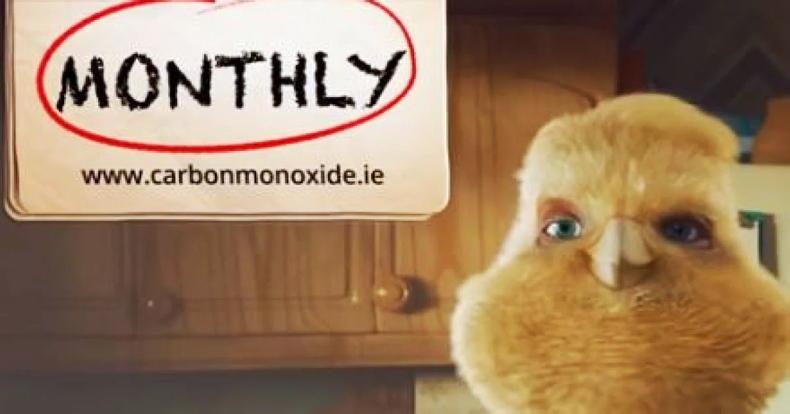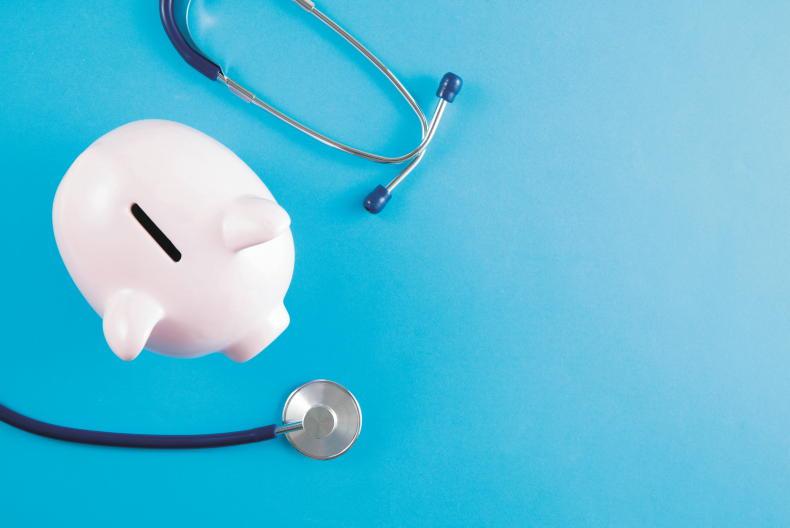Many will have seen Tommy on their TV – the singing canary, reminding us to have a carbon monoxide alarm in our home and to test it every month. If you don’t you could end up like his late Uncle Pat – brown bread (dead).The ad harks back to the days when canaries were used in mines to alert workers to the dangers of carbon monoxide or ‘coal gas’ in the atmosphere.
Many will have seen Tommy on their TV – the singing canary, reminding us to have a carbon monoxide alarm in our home and to test it every month. If you don’t you could end up like his late Uncle Pat – brown bread (dead).
The ad harks back to the days when canaries were used in mines to alert workers to the dangers of carbon monoxide or ‘coal gas’ in the atmosphere.
If the canary looked like it was about to keel over, miners knew they had to get out quickly or put on their protective masks. Canaries were used because they were small and more susceptible to the gas than humans and, therefore, were good risk indicators.
Carbon monoxide is especially dangerous because it has no colour, smell or taste so you won’t know you’re breathing it in – hence the vital need for alarms in confined spaces like homes and sheds. Death can happen within three minutes if there is a significant amount of carbon monoxide in the atmosphere.

Many will have seen Tommy on their TV – the singing canary, reminding us to have a carbon monoxide alarm in our home and to test it every month.
When a person breathes the gas in, it is absorbed into their bloodstream from their lungs. There it combines with haemoglobin to form carboxyhaemoglobin.
This reduces the ability of the blood to carry oxygen around the body so the heart, brain and other vital organs don’t get what they need. How badly and how quickly a person is affected depends on the amount of the gas in the atmosphere.
“The health impacts of carbon monoxide poisoning are mainly as a result of inadequate oxygen in the organs of the body,” says Dr Ina Kelly, HSE consultant in public medicine for environmental health.
Symptoms of carbon monoxide poisoning
Symptoms and signs can vary from mild to severe depending on the level of carbon monoxide being inhaled. Mild symptoms include headaches, nausea, vomiting, dizziness, and blurred vision.
More severe symptoms are confusion, fainting, chest pain, shortness of breath and a fast heartrate as well as muscle damage.
If you are having a severe effect, then it leads to palpitations, cardiac rhythm problems, low blood pressure which can then lead to a heart attack, fluid in the lungs, seizures, a coma or death.
Long term exposure to low levels of carbon monoxide may also produce heart disease and damage to the nervous system, the HSE points out. Children, pregnant women and people with chronic heart disease or respiratory problems are also particularly at risk.
Exposure
Carbon monoxide gas is produced when any carbon-based fuel such as gas, oil, coal, petrol, diesel, LPG or wood doesn’t burn completely.
Appliances involved include fires, boilers, water heaters and cookers.
In the yard, using generators or heaters in confined sheds with no ventilation can be particularly dangerous. Therefore, good ventilation is really important and it is the time of year to get the chimney swept and to check for blocked flues.
There are also important signs to watch out for. For example, black sooty marks on the front covers of gas fires are a sign of raised carbon monoxide levels as are sooty, yellow or brown stains in or around boilers, stoves or fires.
Also, take a close look at gas appliances, the flames should be blue. If they are yellow however, that is also a sign that things aren’t right. If the pilot light also blows out regularly, then it is time to investigate.
Prevention is key however, and as the cold days set in, now is the time to buy an audible carbon monoxide detector or check that yours is in good working order
Many aren’t aware but their pet could also help save their lives. If your pet suddenly becomes ill or dies from an unknown case, then check for a carbon monoxide leak immediately, as animals and birds are more susceptible to the gas.
Also, watch out for seasonal symptoms. For example, if you get more headaches in the winter, or they disappear when you are out and return when you come back to your home, that is a warning sign.
Prevention is key however, and as the cold days set in, now is the time to either buy an audible carbon monoxide detector or check that yours is in good working order. Ideally, you should have two or more.
One should be installed about 15-20 feet away from the fuel burning heat source and the other near the sleeping area. In two-storey houses, install one on each level. Ensure that the detector complies with European Standard EN 50291 and they should also have a CE Mark.
In the event of it going off, then switch off all appliances, open doors and windows, go outside into fresh air immediately and call the Gas Networks emergency line 0800 300 363.
Occupations at risk
As well as homeowners and farmers working in confined spaces, construction workers, garage mechanics, truck drivers and welders are most at risk.
Five work-related fatalities were attributed to work-related exposure to carbon monoxide poisoning in the past seven years, according to the Health and Safety Authority (HSA).
Jason Murray, inspector with the Health and Safety Authority (HSA) says it is critical that farmers identify the tasks and situations where high levels of carbon monoxide may occur.

HSA inspector Jason Murray.
“The most common source of accidental carbon monoxide exposure on farms is running tractors or other vehicles in maintenance garages with the doors closed, which keeps the carbon monoxide in the exhaust fumes from escaping,” he says.
“Holes in the exhaust systems of tractors and other farm equipment can leak carbon monoxide so make sure the exhaust systems are in good order, and that exhaust is directed up and away from tractors and other equipment.
“The location of petrol generators, when in use, is also one to look into. It is important that they are in well-ventilated spaces so that fumes disperse and cannot gather or drift into building openings. If the fumes cannot disperse, even after a few minutes, this can create significant levels of carbon monoxide which can kill.”
Also, inspect the exhaust systems of all gas or diesel-powered vehicles to identify potential leaks
“While there is a big focus on carbon monoxide alarms in homes, it is also important to have them mounted in all enclosed areas of the farm especially where farmers are exposed to operating vehicles, welding fumes or oil-fired heaters.
"Electrical tools should be used where possible, as opposed to petrol powered equipment indoors or in enclosed spaces unless the ventilation needs have been fully assessed. Also, inspect the exhaust systems of all gas or diesel-powered vehicles to identify potential leaks.”
One area that people often don’t think about is drying out areas if flooding has occurred. Often people can be panicked or upset in this situation and don’t assess the risk.
So if trying to dry out buildings that are water damaged, be mindful of the impact of generators.
Petrol or diesel generators and other fuel-driven equipment should never be used in unventilated spaces.
- Further information about carbon monoxide risk is available at:
- hse.ie/conditions/carbon-monoxide-poisoning
- hpsc.ie/a-z/environmentandhealth/carbonmonoxide
What are the health budget changes?
Health budget changes. \iStock
These include:
The introduction of 495 new beds to health services across hospital and community services, bringing the total number of beds to over 18,000.600,000 additional home support hours.An extra net 3,346 staff to be employed in the health system next year.The expansion of emergency departments in five hospitals.Continued support for women’s health measures, including increased access to IVF and Hormone Replacement Therapy free of charge.
An extra €30m is being provided for new (advanced treatment) drugs next year in the Budget.BowelScreen will now be available to all those aged 58-79 (previously 59-69).Payments made to women affected by failures in the CervicalCheck programme will be exempt from income tax, Capital Gains Tax and Capital Acquisitions Tax.
Read more
Health: more funding is needed for breastfeeding specialists
Practical tips to help loved ones cope with mental health struggles





SHARING OPTIONS: